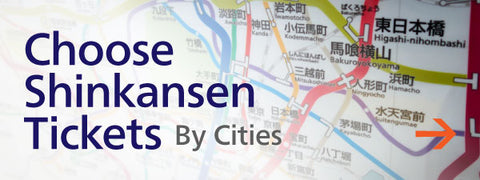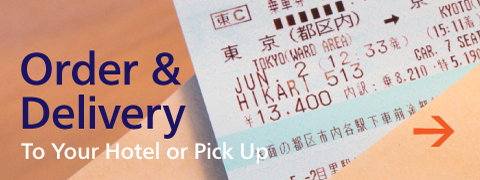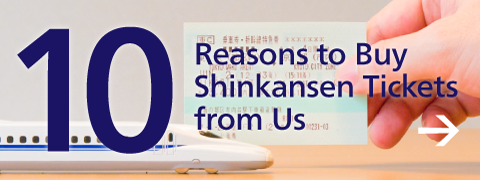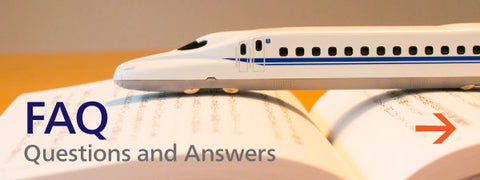Tokyo Station Guide: How to Navigate Japan’s Busiest Shinkansen Hub
Published on August
Last updated on August 20, 2025

Overview: What is Tokyo Station?
Tokyo Station holds a distinguished status as not only the primary terminal serving the Tokyo metropolitan area but also as the premier transportation hub for all of Japan. It is located within Chiyoda-ku, on the eastern fringes of the Imperial Palace grounds. Its prime location places it in close proximity to the renowned Ginza commercial district, adding to its allure.
This iconic station serves as the originating point for a network of major Shinkansen (bullet train) lines, making it an indispensable transportation hub for travelers. These extensive Shinkansen routes include the Tokaido Shinkansen, connecting Tokyo with Osaka and Kyoto; the Tohoku Shinkansen, linking Tokyo to the northern regions; the Yamagata, Akita, and Joetsu Shinkansen lines, providing vital connections to these respective areas; the Hokuriku Shinkansen, delivering swift access to the Hokuriku region; and the Hokkaido Shinkansen, the gateway to Japan's northernmost island.
Moreover, Tokyo Station's significance extends beyond Shinkansen services. It plays a pivotal role in the local commuter network, facilitating seamless transfers to local trains and subways. Remarkably, it boasts the distinction of having the largest number of platforms of any station in Japan, making it a bustling nexus of transportation that caters to both domestic and international travelers alike. With its rich history, exceptional connectivity, and strategic location, Tokyo Station remains an enduring symbol of Japan's efficient and advanced railway system.
Train Lines from/to Tokyo Station
The following lines are available at Tokyo station:
Shinkansen
- Tokaido
- Tohoku
- Yamagata
- Akita
- Joetsu
- Hokuriku
- Hokkaido
JR lines
- Yamanote Line
- Tokaido Main Line
- Ueno-Tokyo Line
- Keihin-Tohoku Line
- Chuo Line/Chuo Main Line
- Sobu Line/Sobu Main Line (including Narita Express, N'EX)
- Yokosuka Line
- Keiyo Line
Subway
- Tokyo Metro Marunouchi Line
Linked Station
Tokyo station is linked to subway Otemachi station which serves the following lines:
- Tokyo Metro Tozai Line
- Tokyo Metro Chiyoda Line
- Tokyo Metro Hanzomon Line
- Toei Mita Line

Tokyo Station Layout & Navigation Tips
Tokyo Station is large and complex, but it’s well organized and foreigner-friendly.
Platforms
-
Shinkansen Platforms:
- Platforms No.14~19: Tokaido Shinkansen
- Platforms No.20~23: Tohoku/Hokkaido Shinkansen, Akita Shinkansen, Yamagata Shinkansen, Joetsu Shinkansen, and Hokuriku Shinkansen
- Local Train Platforms:
- Platforms No.1~10: Chuo Line, Keihin-Tohoku Line, Yamanote Line, Joban Line, Utsunomiya Line, Takasaki Line, Ueno-Tokyo Line, Tokaido Line
- Sobu Line/Keiyo Line Platforms:
- Sobu Line No.1~4
- Keiyo Line No.1~4
Main Exits
- Marunouchi Side: Historic red-brick facade, closest to the Imperial Palace. Good for accessing offices and hotels in central Tokyo.
- Yaesu Side: Closest to Shinkansen platforms and shopping malls like Daimaru. This is the best side if you’re taking a bullet train.

Key Areas Inside the Station
- Shinkansen Ticket Offices (Midori no Madoguchi): Located near Yaesu North and Yaesu Central Exits.
- Shinkansen Platforms: Follow signs for platforms 14–23
- Coin Lockers: Available in multiple sizes throughout the station. Use the station maps or Google Maps for exact locations.
- Tourist Information Centers: Staffed with English-speaking personnel, often near major exits.
Navigation Tips
- Use color-coded signs in English and Japanese
- Allow 15-30 minutes for transferring between platforms, especially during peak hours (weekends, morning on weekdays, and early evening on weekdays)
Shopping, Food and Facilities
Tokyo Station is not just a transit hub—it’s a destination for shopping and gourmet food.
Shipping Highlights
- GRANSTA (inside ticket gates): Offers souvenirs, sweets, cosmetics, and Japanese crafts.
- Daimaru Tokyo (Yaesu North Exit): Large department store with luxury brands and Japanese fashion.
- Tokyo Character Street (Yaesu Underground): Ideal for families, featuring stores like Pokémon, Ghibli, and Hello Kitty.
Food & Bento (Ekiben)
- Find fresh ekiben (bento boxes) designed for train travel in shops near gates or inside ticket gates
- There are bakeries, sushi bars, ramen shops, and cafes both inside and outside the ticket gates
Facilities
- Restrooms: Clean, free, and located throughout the station.
- Baby changing areas, nursing rooms, and accessible toilets are available.
- Charging stations: Some waiting areas and cafés offer outlets for phones and laptops.
Where to buy Shinkansen tickets at Tokyo Station
There are JR ticket offices (Midori no Madoguchi) and ticket machines near gates of Tokyo Station.
- JR ticket office (Midori no Madoguchi): JR's staffed ticket office. Located on the first floor near the Yaesu and Marunouchi entrances as well as inside the station near the Shinkansen gates. Staff can assist you in English, which is convenient if you need help choosing rains, reserving seats, or using rail passes.
- Ticket machines: Automatic ticket machines. Located near the Shinkansen gates on the Yaesu and Marunouchi sides of the station. Machines offer an English-language option and allow you to select trains, reserve seats, and pay by credit card or cash.
Notes: Buying Shinkansen ticket at Tokyo Station can take time. The Midori no Madoguchi ticket offices and ticket machines are often crowded, and you may have to wait in a long line. During busy days or peak travel hours, popular trains can be fully booked, and you may not be able to get a seat if you try to buy tickets just before departure at Tokyo Station.
For a smoother journey, it is strongly recommended to purchase your tickets online in advance. This way, you can secure your seat and avoid waiting in long queues at the station.
Tips for First-Time Visitors
When to Arrive
- Even if you already have a Shinkansen tickets, it is recommended to arrive at Tokyo Station at least 15-30 minutes before your train's departure time.
- JR ticket offices (Midori no Madoguchi) and ticket machines are often very crowded, and you may have to wait 30 minutes or longer. Please allow enough time when coming to Tokyo Station.
- If you have not yet purchased your Shinkansen ticket, we suggest arriving at the station at least 1 hour before your desired train. However, please note that during busy days or peak travel times, trains may be fully booked, and tickets may not be available. To avoid this, we strongly recommend purchasing your tickets in advance.
Platform and Car Location
- Look for your train name (e.g., Nozomi 123) on large electronic boards showing departure information and check the platform number as well as whether your train is on time or delayed.
- At the platform, find signs showing where each car stops; look for painted numbers on the platform floor.
Lost or Missed your Train?
- Speak with JR staff at ticket counters; they can help rebook or explain next steps.

Location
Marunouchi 1-chome, Chiyoda-ku, Tokyo
Map:
Access to Tokyo Station
From Narita International Airport
The Narita Express (N'EX) is an airport express train that runs between the Tokyo area and Narita International Airport, providing direct service from the airport to Tokyo Station. The journey takes approximately 50 minutes from the airport to Tokyo Station.
Please note that we do not sell N'EX tickets at the airport, but you can purchase them directly at Narita International Airport station upon your arrival in Japan.
Additionally, there are Limousine shuttle buses available for travel between Narita International Airport and Tokyo Station, with a minimum travel time of 60 minutes.
From Haneda Airport International Passenger Terminal
There are several transportation options to get to Tokyo Station from Haneda Airport without any transfers. You can take a shuttle bus or a taxi for a direct journey.
If you prefer to use the train or monorail, there are two routes you can take:
-
Take the Tokyo Monorail from Haneda Airport to Hamamatsucho. Then, transfer to the JR line. Ride either the JR Yamanote Line or the Keihin-Tohoku Line from Hamamatsucho to Tokyo Station. This route typically takes approximately 25 to 30 minutes.
-
Alternatively, you can take the Keikyu Line from Haneda Airport to Shinagawa. Then, transfer to the JR line. Board either the JR Yamanote Line or the Keihin-Tohoku Line from Shinagawa to Tokyo Station. This route usually takes about 30 to 35 minutes.
From stations in Tokyo area
You have multiple convenient options for traveling from various stations in the Tokyo area, such as Shibuya, Shinjuku, Ikebukuro, Roppongi, Ginza, and Akihabara, to Tokyo Station using JR lines and subways. In most cases, you can reach Tokyo Station with either no transfers or just a few transfers, making your journey efficient and straightforward.
From Nagoya
Tokaido Shinkansen operates between Nagoya and Tokyo station. Take Nozomi, Hikari, or Kodama Shinkansen from Nagoya to Tokyo. It takes approximately 1 hour 40 minutes by Nozomi, the fastest train.
Shinkansen Ticket: From Nagoya to Tokyo (Nozomi train)
From Kyoto
Tokaido Shinkansen operates between Kyoto and Tokyo station. Take Nozomi, Hikari, or Kodama Shinkansen from Kyoto station to Tokyo station. It takes approximately 2 hours 20 minutes by Nozomi, the fastest train.
Shinkansen Ticket: From Kyoto To Tokyo (Nozomi train)
From Osaka
Tokaido Shinkansen operates between Shin-Osaka and Tokyo station. Take Nozomi, Hikari, or Kodama Shinkansen from Shin-Osaka station to Tokyo station. It takes approximately 2 hours 33 minutes by Nozomi, the fastest train.
JR lines operate between Osaka station and Shin-Osaka station. It takes 4 minutes from Osaka station to Shin-Osaka station.
Shinkansen Ticket: From Shin-Osaka to Tokyo (Nozomi train)
Frequently Asked Questions (FAQ) for Tokyo Station
Q: Where is Tokyo Station located?
A: Tokyo Station is in the Marunouchi business district, near the Imperial Palace, and is easily accessible by JR trains, subway, and airport transfers.
Q: Which platforms are used for Shinkansen trains at Tokyo Station?
A: Shinkansen trains depart from platforms 14-23, located on the upper floors of Tokyo Station.
Q: How do I transfer between local trains and the Shinkansen at Tokyo Station?
A: Simply follow the yellow for "Shinkansen". It usually takes 5-10 minutes to walk from JR local train platforms to the Shinkansen gates.
Q: How early should I arrive at Tokyo Station before my Shinkansen train?
A: Arrive 15~30 minutes before departure if you already have a ticket. If you need to buy a ticket, plant to arrive at least one hour in advance, as ticket offices and machines are often crowded.
Q: Can I use the Japan Rail Pass at Tokyo Station?
A: Yes. You can exchange or reserve tickets using your Japan Rail Pass at the JR service centers in Tokyo Station.
Q: Is Tokyo Station difficult to navigate for international travelers?
A: Tokyo Station is large and busy, but there are English signs throughout the station. Staff at the information desks also assist foreign travelers.
Q: Are there luggage storage and lockers at Tokyo Station?
A: Yes. Tokyo Station has coin lockers and luggage storage services. However, lockers fill up quickly during peak times, so plan ahead.
Q: What facilities are available inside Tokyo Station?
A: The station offers restaurants, shops, convenience stores, and souvenir stores. The underground shopping area "Gransta" is popular with travelers.
What is shinkansen-ticket.com?
Shinkansen-Ticket.com is a Japan-based travel agency specializing in booking Shinkansen and limited express train tickets—including high-demand routes that are often difficult to secure. With nearly a decade of experience, we’ve built a reputation for reliable, flexible, and traveler-friendly service.
We provide both QR code-based tickets for easy station access, ideal for last-minute bookings, and physical paper tickets, which can be delivered to your home abroad, hotel, major post offices, or even a friend’s residence across Japan—perfect for carefully planned itineraries.
Our expertise in Japan’s rail system allows us to offer customized support with a deep understanding of routes, connections, and seating options—including oversized luggage seats, scenic views, and group arrangements.
Trusted by thousands of repeat customers and partnered with numerous hotels and travel agencies, we regularly assist in arranging train tickets for hotel guests and tour clients across Japan.




